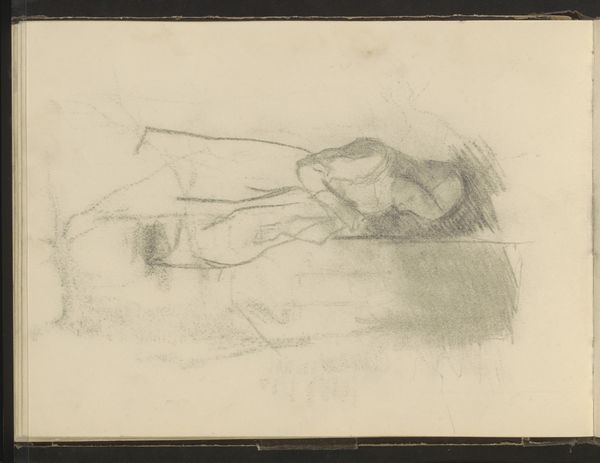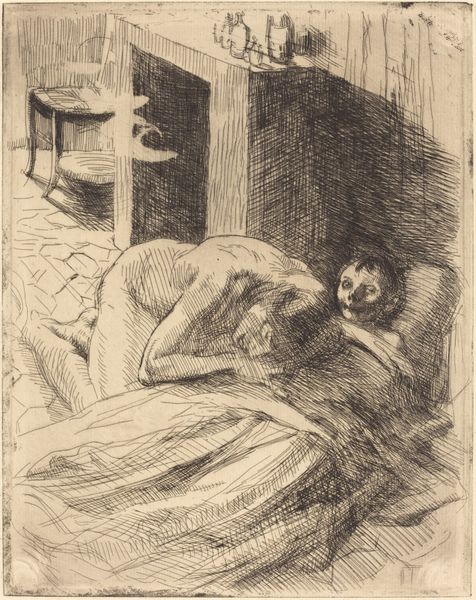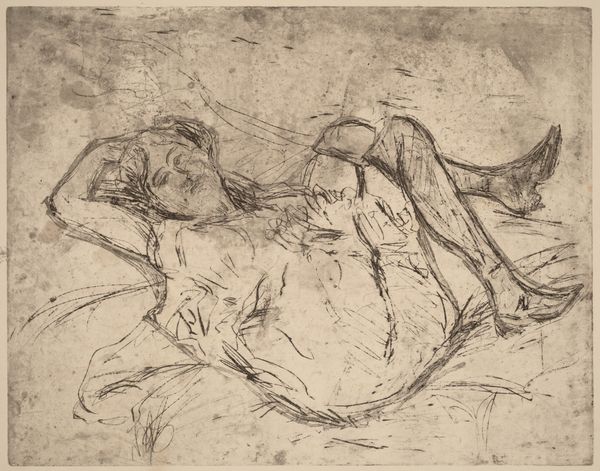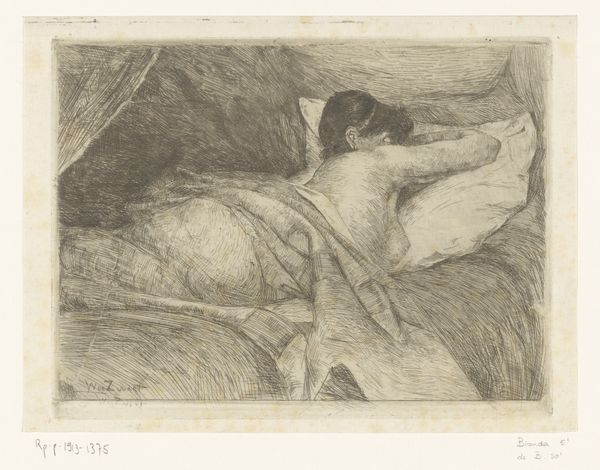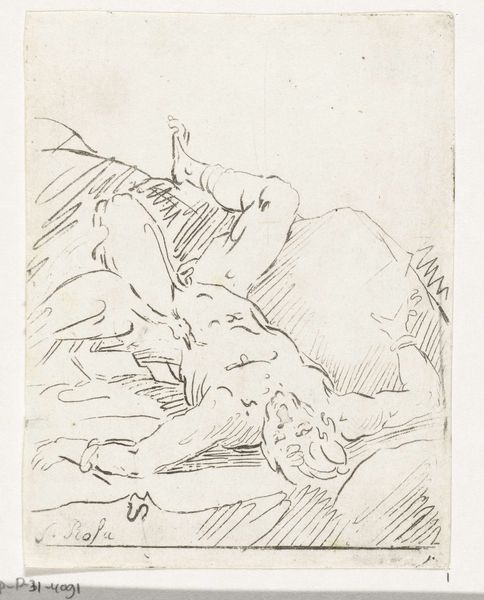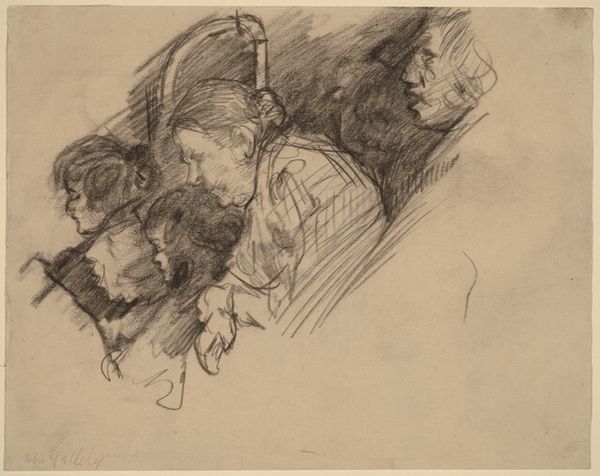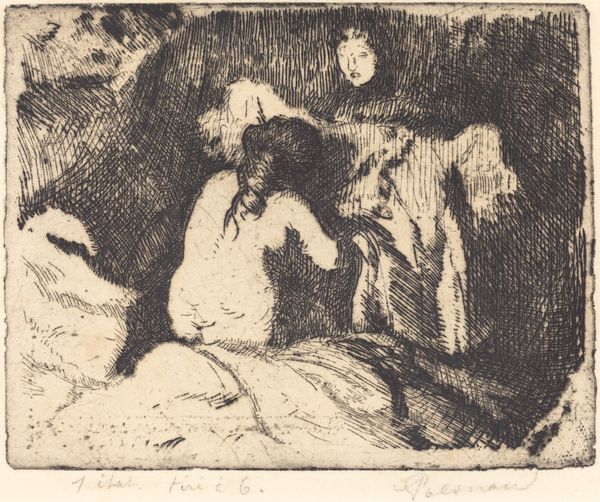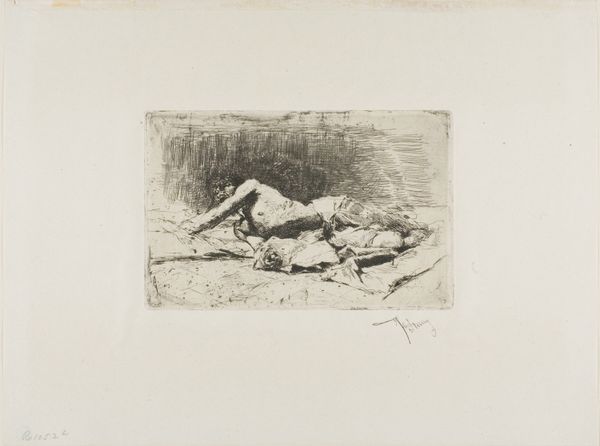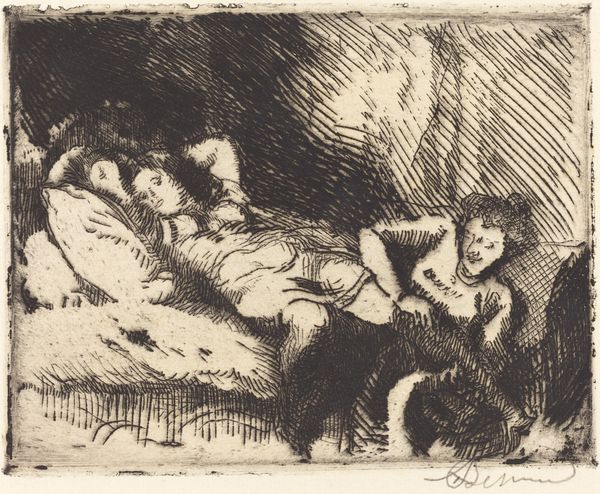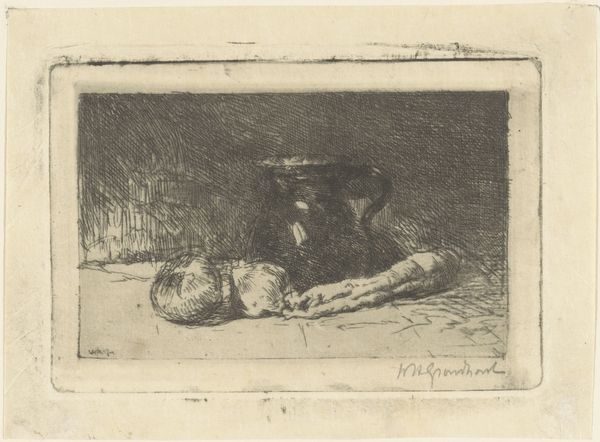
drawing, pencil
#
portrait
#
pencil drawn
#
drawing
#
narrative-art
#
pencil sketch
#
german-expressionism
#
figuration
#
social-realism
#
pencil drawing
#
pencil
#
expressionism
#
history-painting
#
monochrome
Copyright: Public Domain
Curator: This is Käthe Kollwitz's "Unemployment," a pencil drawing completed in 1909. You can find it here at the Städel Museum. What’s your immediate response to this work? Editor: A stark weariness. The entire scene seems to sink under the weight of…something. Is it simply exhaustion, or something deeper, a generational resignation? Curator: Kollwitz had an incredible capacity for capturing profound emotional states, often tapping into collective anxieties. Notice how the sharp contrast and dynamic mark-making heighten the sense of tension and unease. The heavy lines create a dense, almost claustrophobic atmosphere. Editor: Absolutely. It feels essential to consider the context. 1909... Industrialized Germany, rising class consciousness. Unemployment wasn't just an individual misfortune; it was a symptom of systemic failings. Does the slumped figure in the foreground signify despair, and, if so, what is the cultural function of presenting despair? Curator: The symbolism here is particularly compelling. Observe the protective, almost maternal gesture of the woman in the bed, despite her own obvious exhaustion. Consider the way Kollwitz contrasts her exhausted gaze with the vulnerability of the children clinging to her. Is she a secular Madonna, sheltering her children from the cruel outside world? Editor: Or is the pose the result of something else; can the figures even eat? We're left to read their fate. Curator: A powerful reading! Her style itself is loaded with history. While rooted in social realism, there are undeniable elements of expressionism in its raw emotionality and distorted forms, but does her style humanize, or monumentalize these people? Editor: It forces confrontation. To see such vulnerability laid bare is profoundly unsettling, then and now. By portraying the brutal realities of unemployment, Kollwitz wasn’t just documenting; she was issuing a challenge. She presents to us people too easily unseen and too easily erased by historical narratives of success. Curator: Indeed, it’s a visual lament, but also an enduring indictment. Thanks for shedding further light on this drawing. Editor: My pleasure. It reminds us that art can be a vital act of bearing witness.
Comments
No comments
Be the first to comment and join the conversation on the ultimate creative platform.
